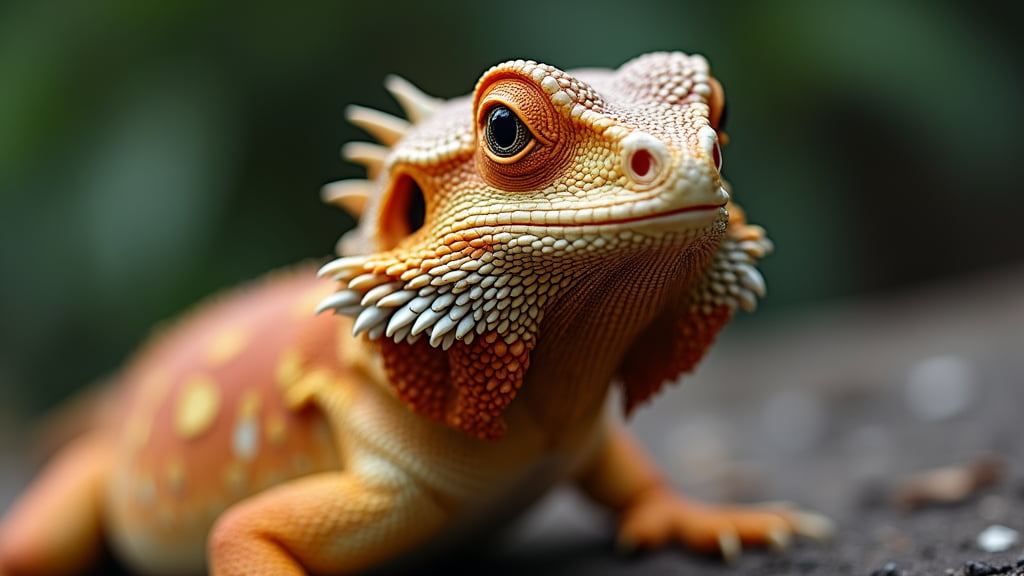Temperature control is absolutely critical for maintaining a healthy and happy bearded dragon. As a long-time exotic pet owner, I’ve had the pleasure of raising several bearded dragons, and I can tell you from personal experience that getting the temperature right in their habitat is key to their well-being. Let’s dive into the world of temperature control and make sure your scaly companion is thriving!
Creating the Perfect Environment for Your Bearded Dragon
Temperature control is absolutely critical for maintaining a healthy and happy bearded dragon. As a long-time exotic pet owner, I’ve had the pleasure of raising several bearded dragons, and I can tell you from personal experience that getting the temperature right in their habitat is key to their well-being. Let’s dive into the world of temperature control and make sure your scaly companion is thriving!
Understanding Temperature Zones
One thing you have to grasp is the concept of temperature zones within your bearded dragon’s enclosure. Unlike some other pets, bearded dragons require distinct areas within their habitat to mimic their natural environment.
The Basking Spot
The basking spot is where your bearded dragon will soak up the most heat, mimicking the hot Australian desert sun. This spot should be the warmest area of the enclosure.
Ideal Basking Temperature
- Juveniles: 40-43°C (104-110°F)
- Adults: 38-42°C (100-107°F)
Tip: Use a reliable digital thermometer to monitor this area daily. I personally use one with a probe to get an accurate reading.
Cool Side of the Tank
Your dragon will also need a cooler area to regulate its body temperature. This helps mimic their natural environment, where they can move between different temperature zones.
Ideal Cool Side Temperature
- Ranges between 24-29°C (75-85°F)
Tip: Avoid heat sources on this side of the tank. I usually place a ceramic hide here to provide a nice shaded area.
Night-time Temperatures
At night, temperatures can safely drop, mimicking the natural drop in temperature that happens in the wild. This aids in their overall health and sleep patterns.
Ideal Night-time Temperature
- 18-24°C (65-75°F)
If your home gets colder than this at night, you might want to invest in a ceramic heat emitter, which provides heat without light, ensuring your dragon’s sleep is undisturbed.
Essential Tools for Temperature Control
Now that we have the ideal temperatures nailed down, let’s talk about the tools you’ll need to keep everything in check.
Thermometers and Thermostats
A good quality digital thermometer is indispensable. I also recommend using thermostats to regulate heat sources better.
Types of Thermometers
- Digital thermometers with probes: These are great for precise readings.
- Infrared thermometers: Perfect for spot-checking different areas of the tank.
Heat Sources
Your heat sources are crucial for maintaining the right temperatures. Here are the most common ones.
Basking Lamps
Basking lamps are your go-to for creating a hot spot. There are various wattages available, so choose one that suits your tank size.
- Best Practice: Position the lamp at one end of the tank to facilitate that temperature gradient.
Ceramic Heat Emitters
These are ideal for night-time heating and for providing a consistent heat source without light.
- Best Practice: Connect it to a thermostat to avoid overheating the tank.
Practical Tips and Troubleshooting
Even with all the right tools and knowledge, managing temperatures can sometimes be tricky. Here are some practical tips and common pitfalls to watch out for.
Regular Monitoring
Consistency is key. I recommend checking the temperatures in different zones twice a day, especially in the morning and evening.
Adjusting for Seasons
Just like in the wild, your bearded dragon’s habitat will naturally fluctuate with the seasons. Here’s how to manage this:
- Summer: Increase ventilation to prevent overheating.
- Winter: Check more frequently and adjust heating elements if needed.
Emergency Situations
Sometimes things go wrong, like a power outage. Here are some quick fixes:
- Use a hot water bottle wrapped in a towel for temporary warmth.
- Purchase a portable generator if power outages are common in your area.
Conclusion
Mastering temperature control for your bearded dragon is a game-changer. Not only does it keep your pet healthy, but it also makes for a happier dragon. With the right equipment and routine monitoring, you can create a habitat that mimics the natural environment of your beloved pet.
If you’re keen to dive deeper into bearded dragon care, check out our other post on bearded dragon habitat essentials or refer to expert advice at resources like the British Bearded Dragon Society.
Remember, for any complex concerns or health issues, always consult with a specialized reptile vet.
Happy herping!
Author: [Your Name]
Published On: [Date]
By following these guidelines, you can be sure you’re providing the optimal living conditions for your bearded dragon and seeing them thrive in their habitat. Feel free to share your own experiences in the comments below—I’d love to hear how you manage temperature control in your setups!

